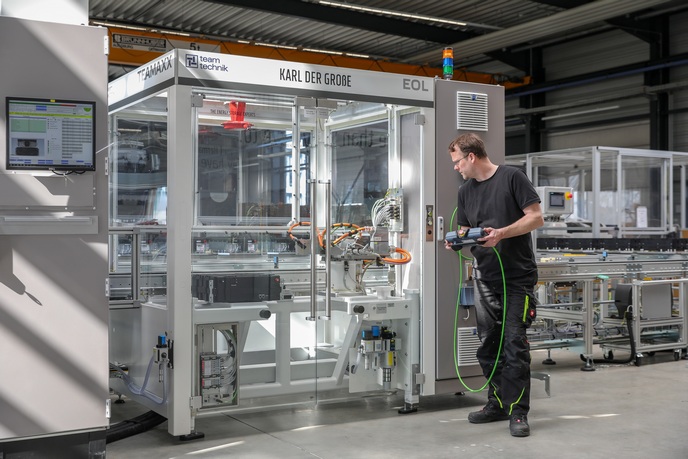High-voltage storage could soon move from the margins to the mainstream
Battery storage systems serve as an interface between intermittent renewable power and the benefits of all-time reliable, clean energy supply. They allow power to be stored when usage is low and released into the network at times of peak demand, help meet peak demand and flatten the duck curve, and keep grid frequency within preset limits. “Increased energy capacities, faster recharge time, enhanced safety and low costs are crucial to the success of battery storage systems. In particular, value for money was cited as the number one barrier to impeding market penetration of battery storage systems by 49 % of respondents in a survey conducted by trend:research,” notes Daniel Hannemann, co-founder of Tesvolt and coordinator of the EU-funded HiVOLT project.
Rising from obscurity to the mass market
Tesvolt unveiled a new stationary battery storage system that tears down the barriers that chronically impede large-scale renewable power. The grassroots innovation behind Tesvolt’s new solution relies on a technology called high-voltage storage, a first of its kind in the renewable energy field that also demonstrates unprecedented cost-efficiency. “High-voltage storage technology has hitherto been reserved for use in a luxury class of electric vehicles. The high performance-to-cost ratio of our solution extends the realm of the technology's possible applications to a wider mass market, including the renewable energy sector. Our goal is to reduce battery storage costs for energy applications to EUR 0.07/kWh” explains Hannemann.
Battery innovation is thriving
Unlike state-of-the-art systems that languish at low-voltage modes, Tesvolt’s high-voltage storage system eliminates the need for expensive and heavy transformers for power transmission. “Transformerless power supplies slash costs related to power electronics by more than 50 % compared to existing systems. Instead, a boost converter helps the system step up output voltages. There is no limit to the output voltage our system can adapt to. Our battery is also compatible with any commercial low- or high-voltage inverter. This enables us to break the link between battery and power electronics development once and for all,” adds Hannemann. Tesvolt’s battery storage system is highly flexible thanks to its modular design. Additional cells can quickly and easily fit to each other in the module. The system can also be expanded with further battery modules. The company is using Samsung SDI’s new prismatic lithium cells, which a renowned carmaker has recently introduced in its electric cars to expand their range. It is combining the new cells with an active battery optimiser – a special battery management system – to ensure active cell balancing between all cells in the battery module. This enables the battery storage system to complete around 8 000 full charge cycles with a depth of discharge of 100 %. Ultimately, the system features a static switch far more efficient in managing power than existing technologies. Put together, all these advances make Tesvolt’s high-voltage storage system more affordable, energy-efficient and longer-lasting than competitive technologies. “Our main goal is to make future lithium batteries for high-voltage storage so affordable that renewable energy will be consistently more profitable than fossil fuels. Our solution can be connected to all types of renewable sources, such as solar, wind, hydro, biogas and combined heat and power systems, whether on-grid or off-grid,” concludes Hannemann.
Keywords
HiVOLT, TESVOLT, high-voltage storage, battery storage, renewable energy, boost converter, active battery optimiser, prismatic lithium cells







